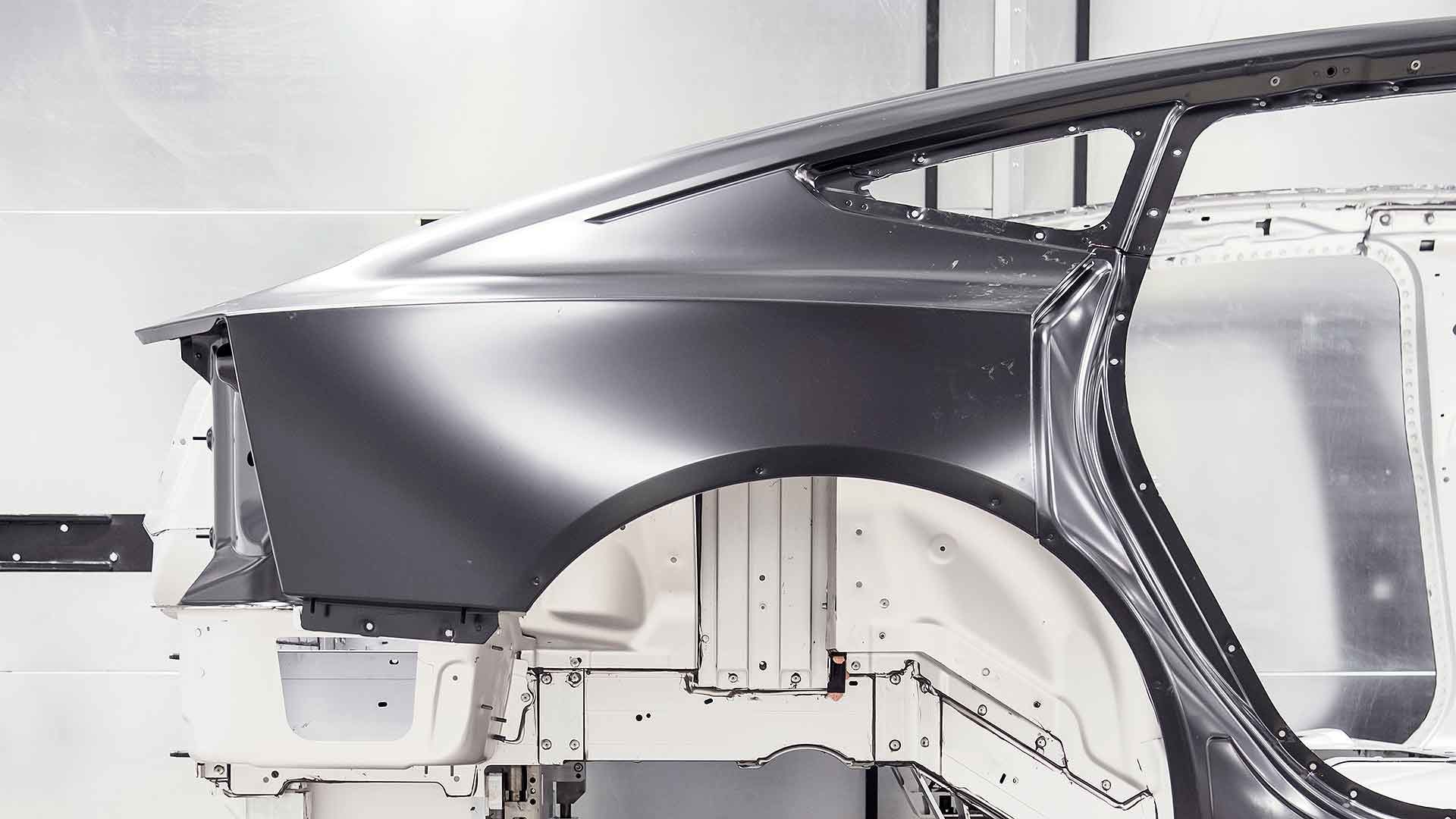
The new Polestar 5, the first clean-sheet model from the Swedish electric car company, is being developed in Britain. The high-performance GT will take shape at a new R&D facility in Coventry.
More than 280 UK-based engineers have created an all-new bonded aluminium platform, using similar technology to that pioneered by Lotus and Aston Martin. The team is now scaling up to over 500 employees, and preparing the four-door, four-seat Polestar 5 for launch.
Polestar engineers have previously worked at Formula 1 teams, sports car manufacturers such as McLaren and Lotus, plus Jaguar Land Rover – and even the LEVC London taxi company. This has created ‘industry leading in-house engineering and R&D capabilities’ from scratch, says Polestar.
Discreetly described by engineers as the firm’s rival to the Porsche Taycan, the Polestar 5 will be a high-performance GT with ‘class-leading’ dynamics, rigidity and safety.

The new 5 is the production version of the Precept concept car (pictured above). Polestar is targeting a 2024 launch for the new EV.
“Our UK R&D team is one of Polestar’s greatest assets,” said Polestar CEO Thomas Ingenlath.
“Their mix of engineering and technological expertise enables us to develop advanced lightweight sports car technology with a creative mindset and a spirit that embraces innovative engineering. This will set Polestar apart in the years to come.”
What is bonded aluminium?

A bonded aluminium platform is an architecture bonded or ‘glued’ together, then baked in an oven. With additional rivets for reinforcement in key areas, it is exceedingly strong, as well as being light.
Polestar says the finished body will weigh half that of cars in segments smaller than this – and it will be torsionally more rigid than even a traditional supercar. The result is a vehicle that will be more efficient and have a longer EV range than a regular GT in this sector – and also be dynamically responsive, while delivering ‘leading safety levels’.
“This architecture delivers outstanding dynamic and safety attributes,” said head of Polestar UK R&D, Pete Allen.
New production techniques

While bonded aluminium technology is ideal for low-volume sports cars such as the Lotus Elise and Aston Martin line-up, this labour-intensive process has been difficult to scale into higher volumes without impacting quality.
Polestar says its UK team has developed an all-new production process ‘that develops both body and platform in unison’. This means the Polestar 5 can come to market faster than ordinarily possible, while maintaining high levels of quality and body rigidity.
The firm isn’t ready to go into specifics yet, but promises its in-house platform will enable further derivatives to be developed quickly once the Polestar 5 is introduced.
The four-door GT car is on-track to be launched in 2024.
Q&A: Polestar in Coventry

Where is Polestar’s UK R&D hub located?
Polestar’s UK base is currently located at the MIRA test facility in Nuneaton (calling it Polestar Coventry clearly offers more international recognition).
The firm chose MIRA because it has an on-site test track, a wind tunnel and myriad other facilities to call upon. It’s also centrally located for all the engineers it has recruited from JLR, McLaren, Lotus, Bentley and elsewhere.
Why did Polestar choose the UK?
There was competition from other countries to house the first standalone Polestar R&D facility, admits Pete Allen. “But the mix of motorsport, large OEM, specialist sports car and engineering consultancy expertise available in the UK is unique in the world.
“We wanted to develop an alternative approach, one that’s faster and more innovative, which can be more nimble and agile in response to market and technological changes. Nowhere else in the world has such a concentration of relevant capability in such a small area.”
How significant is the work done by Polestar UK?
Up to now, Polestar has taken existing Volvo platforms and honed them for its own requirements. That’s why, deep down, the Polestar 2 is essentially a Volvo XC40.
Interestingly, the first running Polestar 5 test mule was actually derived from an XC40, albeit with a unique driving position to mimic the new GT car: “You could just about see over the edge of the door.”
Polestar UK is creating the company’s first bespoke model, unique from the ground up. In doing so, it is accelerating development of the Polestar DNA, and helping the brand become distinct from Volvo.
The work being done is therefore very significant, and will accelerate the evolution of Polestar into a standalone premium electric car brand.
How many people work at Polestar UK?
The initial hand-picked team, formed in May 2019, was tiny. Pete Allen explains how they had to borrow chairs from MIRA to interview people in their empty building.
It’s now approaching 300 people and growing all the time. The goal is to have 800 people working for Polestar UK, based in two locations. For context, McLaren Automotive employs around 2,500 people.
Will the Polestar 5 be similar to the Precept concept?
Polestar UK is aiming for the production 5 to be as close as possible to the Precept. Journalists were briefly shown a computer rendering that suggests differences will be minimal.
It’s been challenging, admits Pete Allen. “The concept is very low, and the battery sits below the passengers. Combustion engine cars have an immediate 150mm advantage here. “It’s a particular challenge for packaging the suspension: we spent a lot of time during the early phase resolving this.”
He is also confident the unique seating position of the Precept, with a large distance between front and rear passengers, will be carried through to the production car. “We’re comparing legroom to a long-wheelbase Volvo S90.”
ALSO READ: